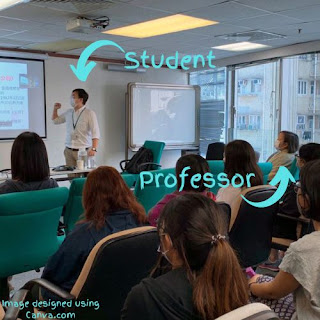Life Is Easier Than It Seems
List of Figures and Tables
Preface
Acknowledgements
Introduction
Chapter 1: Where You Begin
Chapter 2: What Makes You You
Chapter 3: Keys to Analyzing Your Behavior
Chapter 4: Passing Time
Chapter 5: Emotions, Simplified
Chapter 6: Why You Do What You Do
Chapter 7: Giving and Receiving Compliments
Chapter 8: There’s No Winning the Drama Game
Chapter 9: The Script You Follow
Chapter 10: Stop Torturing Yourself
Chapter 11: Personal Problems, and How to Solve Them
Chapter 12: Getting Well
Chapter 13: Taking Personal Inventory
Chapter 14: Life Is Easier than it Seems
Chapter 15: TA for Teaching and Learning
Conclusion: The Goal Is Integration
Download the Entire Book (PDF)
PREFACE
This book began as a course I was teaching at my university. The course took place in the classroom during a global pandemic, and therefore had only about eight students and myself. Because it was such a small group, we were able to let go of the ordinary teacher and student roles, and began having frank discussions about our personal interests. Within a few weeks it became clear that we were not interested in learning about what other psychologists had done, which is how normal psychology courses are organized. We wanted to practice these things for ourselves.
As fortune would have it, I had just made a serious study of an area of psychology called “transactional analysis.” The critical and sometimes embarrassing self-reflection that my study of TA required had led to striking changes in my professional and personal attitudes.
Professionally, for example, my fire for teaching had become a vaguely glowing ember. I had even written a novel with the opening line:
This is a story about higher education, and how terrible it is.
In the novel, I elaborated on that idea.
But then I was introduced to TA, and I began applying it to myself. I soon realized that most of what I hated about higher education was in my imagination: I was torturing myself with unreasonable demands and expectations. So I let those go. I came to understand that higher education didn’t suck, after all.
To be sure, there is room for improvement. But I no longer felt as though I was in a fight against some anonymous giant. Instead, I found that there were real and practical things that I could do about improving higher education. Things that were within my sphere of control. That is why I became my university’s coordinator of general education. It is also why I began conducting workshops for faculty and staff as a university fellow.
Here is what the chair of my department said when she learned that I had accepted the coordinator position: “You know that’s, like, an administrative position, right?”
In other words, the change in me was noticeable by others, too. I credit TA and the exercises that follow for my transformation.
If you desire for similar changes to occur within yourself, then read what follows carefully and creatively. Work through the analysis practices at the end of each chapter. It does not matter how far gone you feel, or how much of a disaster area you find your self-esteem or personality. Transactional analysis is still for you.
It is my sincere belief and my professional understanding that you are okay, psychologically speaking. There is nothing deeply wrong with you. This will come as a surprise if you believe wholeheartedly that you are not okay. The analytic techniques and exercises described in this book are intended to reveal the ways in which you and I booby-trap our own well-being (and sometimes the well-being of the people around us).
For example, just before writing this section I grabbed my laptop without its charging cord. I did this knowing full well that my laptop is old, and that there would be somewhere between a 50% or 60% chance that I would not be able to get it to turn on. After logging on, the screen went blank, so I had to walk back across the house to fetch the cord.
This is a small and insignificant example of how I set myself up to be miserable.
Now it would be easy to call my behavior lazy, or to explain that I had forgotten about the tired laptop battery. In other words, it is easy to paint myself a victim of the cruel mechanics of the universe. But I can also see that I am a grown human who is capable of thinking ahead and avoiding catastrophes, no matter the size.
It is the second explanation for our happiness and misery that I will be describing throughout this book. Taking this perspective means recognizing the role we play in our own well-being. We are not only the stars of our personal narratives; we are also the stage managers, set designers, writers, costume designers, and so forth.


Comments
Post a Comment